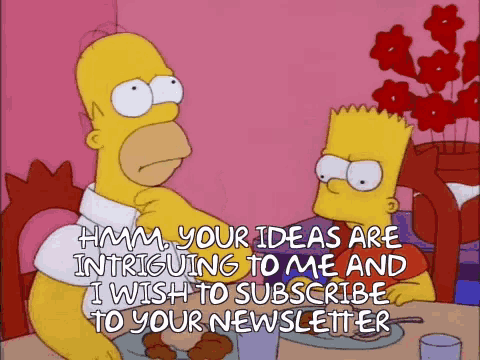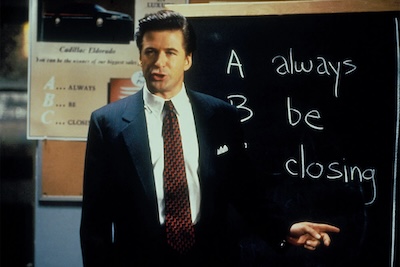James Mangold’s A Complete Unknown traces the journey of iconic musician Bob Dylan (Timothée Chalamet) from his humble roots as a vagabond day player to a culture-defining sensation bringing the world of acoustic folk into the electric era. Throughout the film, Chalamet’s Dylan bonds with some of the most influential voices in mid-century American music from Woody Guthrie to Pete Seeger to Joan Baez. It’s a fascinating portrait of a culture entering a seismically different world and the man who helped take it there.
Editors Andrew Buckland (Oscar winner, Ford v. Ferrari) and Scott Morris (Armageddon Time, Don’t Look Up) partnered to shape Mangold’s film into the compelling vision embraced by audiences and critics alike. Mangold traditionally works with two editors because it speeds a film through the process in an efficient and collaborative manner. A Complete Unknown provided many surprising challenges, so Buckland and Morris’s partnership allowed each to focus on their segments of the film uninterrupted, delivering the best possible product.
One of those challenges included the abundance of performance sequences. Since the actors actually singing and playing their instruments during each sequence, the editors needed to ensure there was visual and sonic continuity should the edit employ scenes from different takes.
Another impactful sequence was the film-closing Newport Folk Festival of 1965 where Dylan unleashes his electronic sound on a shocked audience.
“Dylan was sending a shock wave into the Folk establishment and the editing needed to convey the emotional intensity of that moment. On the surface, it could be viewed as chaos but at its essence it was the individual emotional responses everyone was having to the music Dylan was playing,” Buckland and Morris explained. “The editing challenge was to balance all of those elements while keep Bob at the center of it all.”
Here, in an interview with The Contending, Andrew Buckland and Scott Morris detail their collaboration and partnership with DGA-nominated director James Mangold on A Complete Unknown. They describe the editing rhythms used throughout the film leading up to the climactic Newport Folk Festival sequence. They reveal how editing musical sequences differs from traditional dialogue-based sequences.
The Contending: You split editing duties between the two of you. What within A Complete Unknown required that partnership? How did you divide the work?
Andrew Buckland, Scott Morris: James Mangold always works with more than one editor. It helps him stay efficient and get the most out of the edit. We had many live musical performances and complicated concert sequences that required a lot of time to finesse. Having the two of us meant we were able to split up the work and work at double the speed. We divided the work based on what dailies would come in on a shooting day. We generally tried our best to keep each of us in a sequence knowing that eventually they would become reels. Thankfully we both shared similar approaches to editing. It was an organic partnership that was very helpful when working with Jim.
The Contending: Andrew, you’ve won an Oscar for James Mangold’s Ford v. Ferrari. Tell me about your working partnership with Mangold.
Andrew Buckland: I think the foundation of our partnership is trust, which is born out of the many years of working together. It goes without saying that Jim is an incredible director, and he creates an inspiring space where honest discussion can occur. When working on a scene he has a keen eye on what is necessary and what is not and at the same time he encourages me to think outside the box. If I have an idea about a variation or a different approach to a scene he would want me to explore it. It’s an inspiring collaboration that, for me at least, compels me to do my best work.
The Contending: Were there specific editing rhythms that James wanted to pursue in alignment with the shift between the folk era and the eventual electronic evolution that happens by the end of the film?
Andrew Buckland, Scott Morris: The main editing rhythm that we discussed was making sure each scene “falls into the next”, as Jim would put it, which created a narrative propulsion. We wanted to find the emotional essence of each scene and then move onto the next moment, not overstaying our welcome. With that in mind, the folk performances have a natural intimate quality, and the editing rhythm needed to reflect that. For example, in the scene where Dylan plays “Song to Woody,” we held on the face of Woody for a few beats in order to see and feel how the music was effecting him. It was also crucial to find the right moment to cut to him and to not overuse that particular shot which would end up diminishing its power. The final concert in the film is where Dylan goes electric. The editing approach to these moments was to convey the effect Dylan was having not only on the crowds but also the other characters like Pete and Lomax. Dylan was sending a shock wave into the Folk establishment and the editing needed to convey the emotional intensity of that moment. On the surface, it could be viewed as chaos but at its essence it was the individual emotional responses everyone was having to the music Dylan was playing. The editing challenge was to balance all of those elements while keep Bob at the center of it all.
The Contending: The performance sequences would logically need to be edited in a different style than traditional dialogue sequences. Describe the complexities in editing those moments.
Andrew Buckland, Scott Morris: Jim had a philosophy that the movie is scenes with music rather than scene then music. Therefore the approach to editing the musical performances was to keep the story and the characters’ emotions driving those scenes. Of course, there was the added complexity of editing with the actors’ live musical performances. Each take is unique, with subtle differences in tempo and timing so there’s a lot of nuance to navigate. We’re doing music edits on the fly and working in character and relationship moments while making sure the song is working. The nature of folk music and the way Jim and Phedon [Papamichael, cinematographer] shot the film is intimate and authentic. Often times the song would dictate the editing style, for instance “Song to Woody” in the hospital in the beginning takes its time and lingers in close ups as we see how the song is affecting Woody and Pete and what it means for Bob to play to his idol. While a song like “The Times They Are A-Changin’ ” and the Newport 1965 rock concert at the end of the film is cutting back and forth between the audience and our lead characters reacting which leads to more complex cutting patterns.
The Contending: How does editing performance sequences compare with editing car racing sequences? Which was more challenging?
Andrew Buckland, Scott Morris: It goes without saying that each sequence presents its unique challenges. Musical performance and car racing on the surface are very different but in essence they are both “driven” by pacing and rhythm. A musical performance is governed by the music being played which has a built-in rhythm but the challenge is to find the dramatic character moments within that. It’s the same with car racing.
The Contending: What was the most difficult sequence to shape through the edit?
Andrew Buckland, Scott Morris: The most difficult sequence was the final concert of Newport ’65. We touched on it earlier when discussing pacing and rhythm. It was challenging because of the many elements at play in the scene. The music Timothée was playing as Bob was playing was shot as 20-minute takes with multiple cameras. We had to find moments within these takes to cut to the dramatic beats happening offstage. For example, Lomax storming off stage to turn down the sound board and then Pete doing the same and going for the ax. All of these moments are balanced around Bob who is at the center of the “musical hurricane” he is creating. The crowds were particularly challenging because you need to see and hear their progression from stunned silence to outrage. We had to find those specific moments in the crowds that would visually convey their reaction as well as sonically create the right about of booing vs cheering.
A Complete Unknown currently plays in theaters nationwide.









